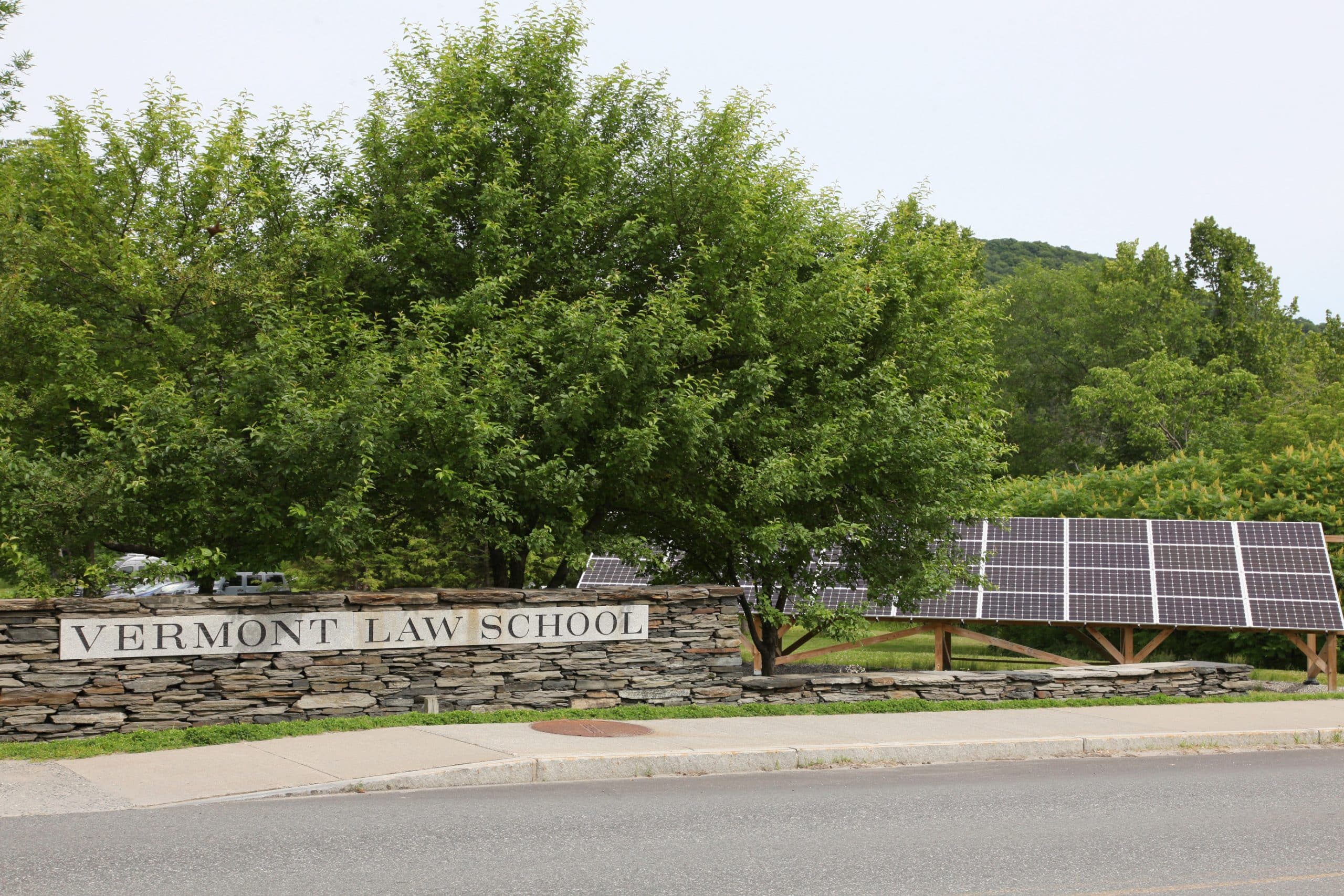
Institute for Energy and the Environment
Overview
Energy and the environment are inextricably linked. An enormous proportion of Earth’s environmental issues stem from energy usage. If you care about the environment, energy policy is the single most important influence; and if you care about energy, environmental externalities are the most important constraint. Perhaps no environmental or economic challenge is more important today than our need to expeditiously transition to a low-carbon future.
Our quest for knowledge covers a wide spectrum of disciplines – including law, science, engineering, finance, public policy, and economics. Meanwhile, career opportunities continue to expand with the rapid growth of solar and offshore wind development, the electrification of our transportation system, as well as new clean distributed opportunities in storage, demand response, efficiency, and renewables.
Students who participate in Vermont Law and Graduate School’s Institute for Energy and the Environment (IEE) partake in cutting-edge research, analysis, and advocacy. These in-demand skills prepare students and graduates to make a transformative impact on both the environment and the global economy.
VLGS leads the nation in equipping students for the clean energy transition. Our energy law and policy program offers the largest selection of clean energy courses, esteemed experiential learning opportunities in renewable energy, new clean transportation classes and research options, and seamless integration with a world-class environmental law and policy program – including unparalleled climate law course offerings.
Our Institute for Energy and the Environment is a renowned resource – nationally and globally – focused on the energy policy of the future. The institute combines a research associate program, which serves as a center for graduate research on the transition to a clean energy future, with a vibrant student-staffed energy clinic, which works on legal and business models for community energy development. Our unique year-round Energy Clinic works on the cutting edge of renewable energy development, including powering VLGS with over 50% local solar energy.
The IEE Research and Energy Clinic teams continue their work on the important issues of clean transportation, climate justice, community solar ownership, and cybersecurity policy. Our year-old Farm and Energy Initiative addresses the interrelated issues of agriculture and energy sustainability. Learn more about what we do and how you can come join us and shape the energy policy of the future.
Can the institute help you, your organization, or your enterprise? Join us through our leading, hands-on residential curriculum in beautiful central Vermont; through our unique online curriculum; or through our distinct short-course options during the stunning summer season. Together, let’s build a better tomorrow!
For more information see the IEE Fact Sheet
Curriculum
Energy Law Specialization
VLGS courses and clinics consider the relationship between energy and the environment in the context of its legal, scientific, commercial and human implications.
Energy Law Concentration
The concentration in Energy Law involves the study of the law and policy relating to renewable energy development and the environmental problems associated with traditional energy production.
JD/LLM Joint Degree in Energy Law
Earn both a Juris Doctor (JD) and an LLM in Energy Law in less time than is required to obtain each degree separately.
LLM in Energy Law
Designed for students who have already earned a law degree and wish to pursue intensive study and training in the field of energy law.
Master of Energy Regulation and Law (MERL)
Focuses on law and policy governing energy use, production, and transmission.
Online Learning
Earn a law degree online with VLGS or take courses as a non-degree seeking student.
Energy Clinic
The Energy Clinic operates year-round (fall, spring, and summer sessions) and provides opportunities for our JD, LLM, and Masters of Energy Regulation and Law (MERL) students to progressively develop the knowledge, skills, and values integral to the field of energy law and policy while helping our clients meet local energy needs with reliable, clean, and affordable resources.
Energy clinicians undertake projects to resolve energy law and policy challenges in a sustainable and socially equitable manner, for both the local community and the world. As a result, our masters and JD students are hired directly from the Energy Clinic to meaningful positions in renewable energy development, clean energy, and climate justice advocacy, law firms, and throughout all levels of the public sector.
The Energy Clinic’s work in community solar continues to evolve in response to changing laws and policy. Currently, student clinicians are working with clients throughout New England to help shape state policy to advance community solar and expand community solar outreach across New England and beyond. The Energy Clinic is also investigating barriers to low-income solar ownership and developing ownership models, how-to guides, and template legal agreements specific to the needs of low-income communities so that clean, distributed solar can help reduce, rather than increase, income inequality.
Read more about The Energy Clinic
“THE ENERGY CLINIC WAS AN EXCELLENT EXPERIENCE OVERALL – I WAS EXPOSED TO LEASE AGREEMENTS, OPERATING AGREEMENTS, DISCLOSURE STATEMENTS, ETC. AND THROUGHOUT THE PROCESS I GAINED A SOLID UNDERSTANDING OF COMMUNITY RENEWABLE DEVELOPMENT PROJECTS IN GENERAL. I DEFINITELY RECOMMEND THE CLINIC TO ANYONE INTERESTED IN ENERGY DEVELOPMENT, TRANSACTIONAL LEGAL WORK, OR TO ANYONE WHO JUST SIMPLY WANTS TO WORK WITH AN AMAZING GROUP OF PEOPLE.”
Travis C. Jones, 2018 Summer Clinician
J.D. Candidate, 2020
People
Institute Staff
Eduardo Otero Bakai
Genevieve Byrne
- Professor of Law
- Staff Attorney, Farm & Energy Initiative
Jenny Carter
- Professor of Law
- Staff Attorney
William Fridlund
Mark James
- Interim Director, Institute for Energy and the Environment
- Associate Professor, Maverick Lloyd School for the Environment
- Associate Professor of Law, Vermont Law School
In Memoriam – Kevin B. Jones
- Director, Institute for Energy and the Environment
- Professor of Energy Technology and Policy
Carlson Swafford
Research Team
Institute for Energy and the Environment (IEE) student research associates work on some of the most pressing energy concerns the world faces today, including a cleaner transportation system, renewable energy policy and resource development, a smarter and more resilient grid, energy data privacy issues and a more just energy system. Researchers are often co-authors on client funded reports, law review articles, and books on issues related to climate mitigation and adaptation.
Ashlynn Bean
- IEE Research Associate
Liam Datres de la Blotier
- IEE Research Associate
Mary Franco
- JD/MERL 2022
- IEE Research Associate
Grant Hart
- IEE Research Associate
Ciara Hopkins
- JD/MERL 2022
- IEE Research Associate
Alec Kerestedjian
- IEE Research Associate
Lauren Kobayashi
- IEE Research Associate
Kevin McElfresh
- IEE Research Associate
Jack McGowan
- AJD 2023
- IEE Research Associate
Isabella Montoya
- IEE Research Associate
Matthew Murphy
- JD MERL, 2022
- IEE Research Associate
Morgan Pace
- IEE Research Associate
Sarah Pardee
- JD/MERL 2023
- IEE Research Associate
Theodore Pupilla
- IEE Research Associate
Lindsay Rostron
- IEE Research Associate
Christopher Scheffler
- JD MERL, 2022
- IEE Research Associate
Sai Spoorthi Swamy
- IEE Research Associate
Ryan Sterling
- IEE Research Associate
Carlson Swafford
Bobby Turner Jr.
- IEE Research Associate
Energy Fellows
Arturo Brandt LLM ’04
- Adjunct Faculty
Dan Delurey
- Senior Fellow for Climate and Energy
Graduates
A Masters degree in Energy Regulation and Law opens a wide variety of doors and career opportunities for our graduates. Our alumni go on to work and lead in a variety of fields and practices all over the world. Here are what just a few of our alumni are doing, along with a few words about how their Vermont Law School education helped them get there.
Austin Andersen
- Associate Counsel, Green Lantern Solar
Allison Berg
- JD/MERL 2021
- IEE Research Associate
Zachary Berger
- Law Clerk, Office of the Attorney General, Environmental Protection Division
Christopher Casey
- Associate
- Bevan, Mosca & Giuditta, P.C.
Danielle Changala
- General Counsel
- Ranger Solar LLC
Charlotte Cohn
- Utility Policy Analyst
- American Council for an Energy-Efficient Economy
Michael Crouse
- Associate
Lindsay De May
- Legislative Aide, Central Coast Agriculture, Inc.
Antonia Douglas
- Associate, Troutman Pepper
Adelaide “Ellie” Hardwick
- Associate Attorney, SANGER LAW, P.C.
Chris Heine
- Facilities Project Manager, Trow & Holden
Amanda Hustrulid
- JD/MERL 2019
Graham Jesmer
- Regulatory Counsel
- ISO New England, INC
Cody Kabus
- Energy Engineer
Trevor Laughlin
- Policy and Regulatory Affairs Analyst
Nicole Lepre
- Policy Analyst
- Atlas Public Policy
Max Matt
- Associate at Carmody, TOrrance, Sandak & Hennessy
Katherine Oaks
- Associate, Preti Flaherty
Autumn Proudlove
- Senior Manager of Policy Research
- North Carolina Clean Energy Technology Center
Matt Rubin
- Energy Policy Analyst
- State of Nevada at Western Resource Advocates
Austin Schessl
- Clean Energy Innovation Fellow
Vishrut Shelat
- Law Clerk
Christa Shute
- Staff Attorney
- NH Office of the Consumer Advocate
Allison Silverman
- Attorney
- Climate and Energy Program
- CIEL
Taylor Smith
- Program and Curation Coordinator
- NEXUS Global Summit
Matthew Stern
- Energy Regulatory Associate
- Keegan Werlin LLP
Brian Thomson
- Senior Manager Regulatory Affairs
- Massachusetts Municipal Wholesale Electric Company (MMWEC)
Katie Johnson Treadway
- Senior Vice President and Head of Regulatory Affairs
- One Energy
Veronica Ung-Kono
- Fellow, Department of Energy
- Vermont Public Utility Commission
Claire Valentine-Fossum
- Judicial Law Clerk
Amber Widmayer LLM’17
- Adjunct Faculty – Online Learning Program
- Regulatory Specialist, Burlington Electric Department
Jonathan Willson
- Senior Development Manager
- Walden Renewables
Kelt Wilska
- Energy Justice Manager
Bridget Woebbe
- Assistant Counsel
- New York State Department of Public Service
Nicole “Colie” Young
- Associate Attorney
David Zoppo
- Associate
- Perkins Coie, Madison, Wisconsin
International Programs
International Energy Activities
The global energy system is complex and undergoing constant change, complicating the transition to a lower carbon future. Vermont Law School’s Institute for Energy and the Environment engages with our partners such as our U.S. Asia Partnership for Environmental Law, our international fellows in Europe and Latin America, and international faculty and students in locations such as Havana, Cuba in order to broaden the reach of our educational program and to learn from other region’s experiences in the low carbon transition. The Institute for Energy and the Environment welcomes students and scholars from across the globe and embraces the opportunity to build new international collaborations that help expedite our transition to a clean energy future.
See the announcement and call for papers for the Just Transition to a Low Carbon Future 2020 Conference cosponsored by the IEE.
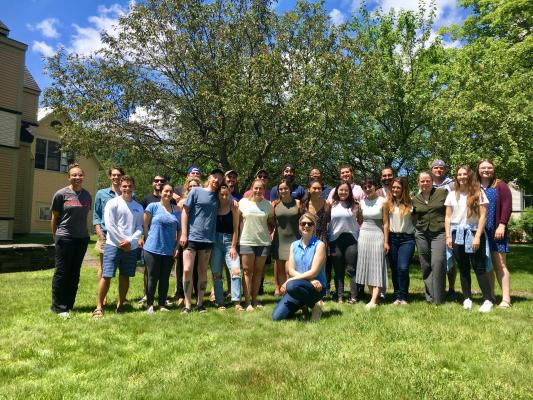
Our summer session course, Global Energy Law and Policy, alternates between a focus on European Energy and Climate Law and Latin American Energy and Climate Law. In the summer of 2019 Dr. Anna Marhold taught the course from an EU perspective. Dr. Marhold is an Assistant Professor at the Institute of Public Law and the Grotius Centre for International Legal Studies at Leiden University where her specialization is international economic law, with a particular focus on international trade law at the intersection of energy and environmental regulation.
In addition, our curriculum offers multiple opportunities to explore environmental issues across Asia, including leading research opportunities through our U.S. Asia Partnership for Environmental Law.

During the summer of 2020, Arturo Brandt will again teach Global Energy Law and Policy, focusing on Latin American Energy and Climate Law and Policy. Arturo, who has an LLM in Environmental Law from Vermont Law School, is a Senior Broker and Representative for Latin America with the UK firm TFS Green and Senior Counsel with the Santiago firm, Grupo Vial-Serrano Abogados, as well as, a Senior Fellow with the IEE.
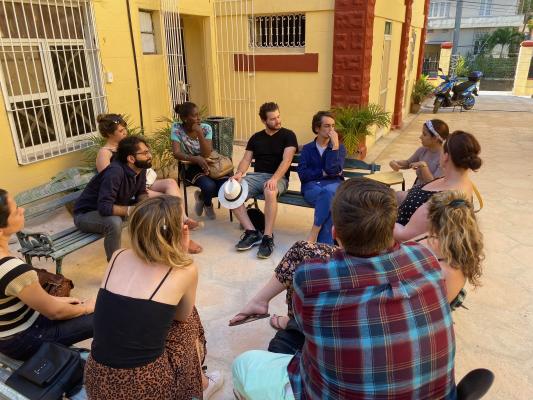
The Environmental Law Center at VLS offers multiple field study courses and one of the many popular choices is Global Sustainability Field Study, which currently focuses on farm and energy sustainability in Cuba. Over Thanksgiving break in 2019, 28 students, along with IEE faculty, visited Havana and the Cuban countryside to observe their policies up close. The students visited renewable energy facilities, leading sustainable farms, and visited the Technological University of Havana (CUJAE) and the University of Havana School of Law. Students also met leaders from the NGO CubaSolar and the agency CubaEnergia and visited cultural and historic sites. We are excited that during the Summer of 2020, Professor Natacha Mesa Tejada, Professor of Commercial Law with the Faculty of Law at the University of Havana, will join us for two weeks as our summer energy scholar.

The IEE was pleased to have Elizabeth McDonald visit us for three weeks in 2019. Elizabeth is an attorney with the Australian firm SWS Lawyers in Newcastle and also teaches with the University of Newcastle School of Law. Elizabeth was visiting with the support of an Endeavour Executive Leadership Award and chose VLS because of our unique work on community solar in our Energy Clinic. We often have scholars from around the world visit the IEE and last year we were fortunate to have Professor Xin Qiu from Jinan University School of Law in China visit the IEE for six months. Other recent visiting energy law scholars have been Professor Eva Barret from Ireland, Professor Birgitte Egelund Olsen, Aarhus University in Denmark, and Anna Butenko from Tilburg University in the Netherlands.
Energy Activities in China
The Institute for Energy and the Environment collaborates with Vermont Law School’s U.S. Asia Partnership for Environmental Law to perform legal and policy research on the clean energy transition and build collaborative relationships with academic and research institutes in Asia. We welcome the opportunity to work with students and scholars from China and across Asia. Here are examples of our recent work and collaborations.
Wuhan University School of Law – Wuhan, China
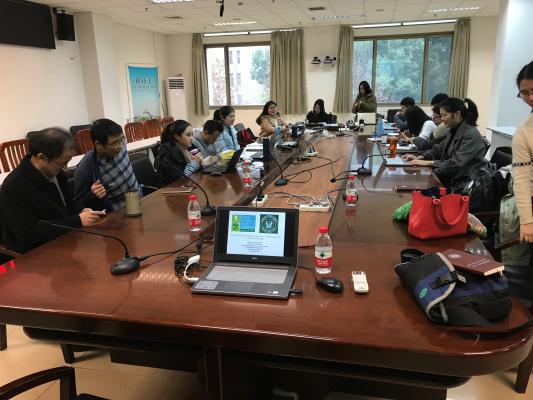
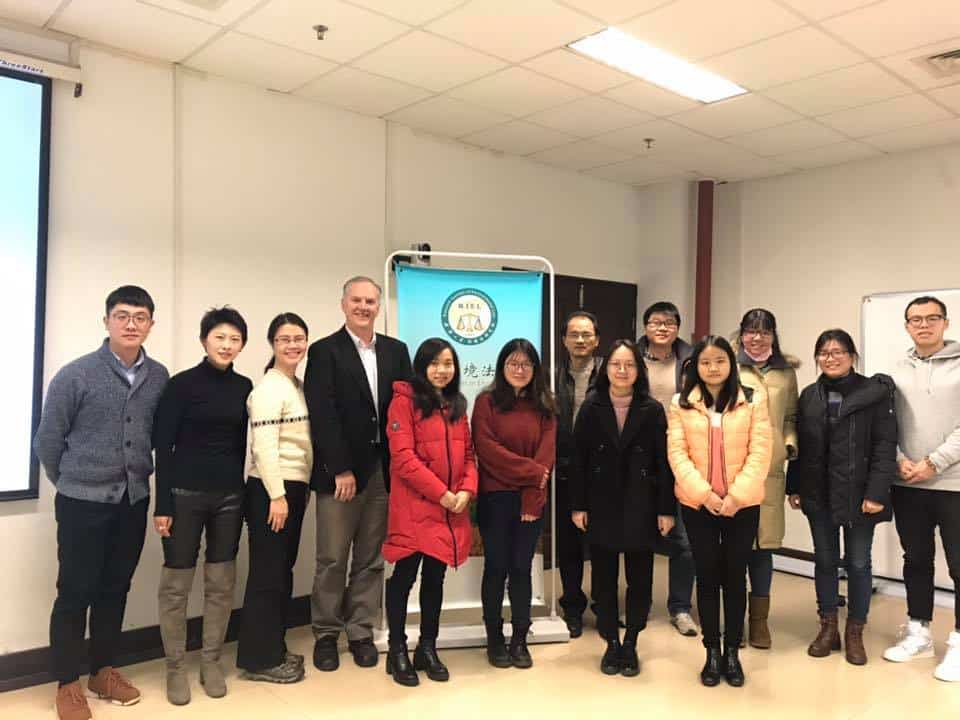
Tsinghua University School of Law – Beijing, China
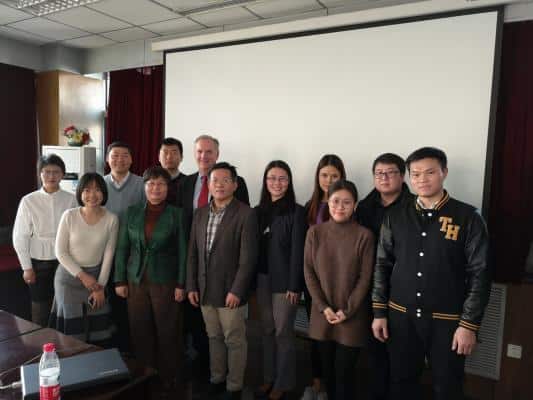
National Judges College in Beijing
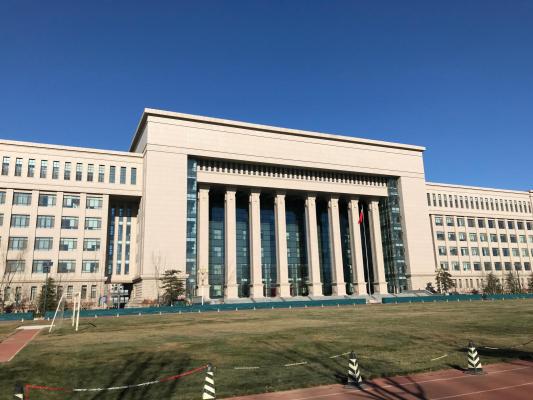
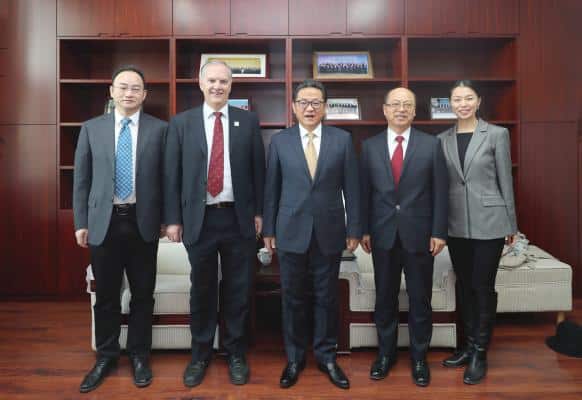
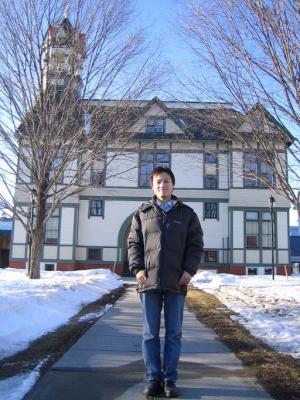
Global Sustainability Field Study – Cuba
Since 2016 the IEE has been building bridges to institutions in Cuba focused on sustainable energy. In 2017 we brought 17 students and faculty there as part of a noncredit Renewable Energy Study Tour. In 2019, as part of the Environmental Law Center’s new course, Global Sustainability Field Study, we brought 31 students and faculty to Havana during the week of Thanksgiving to study energy and agricultural sustainability. Shared here are some of the images of what we saw, who we met and what we learned. Plans are underway to return in 2020.
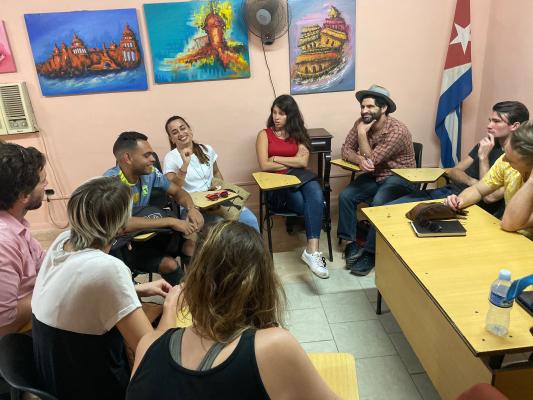
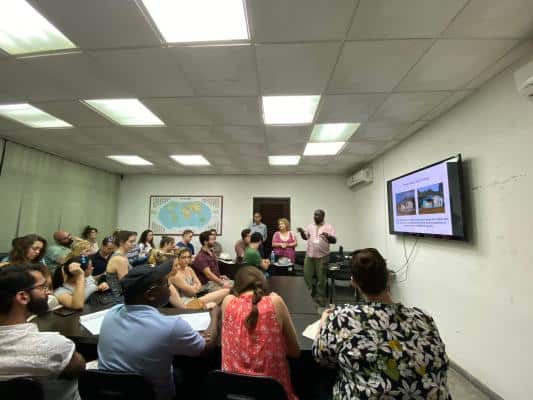
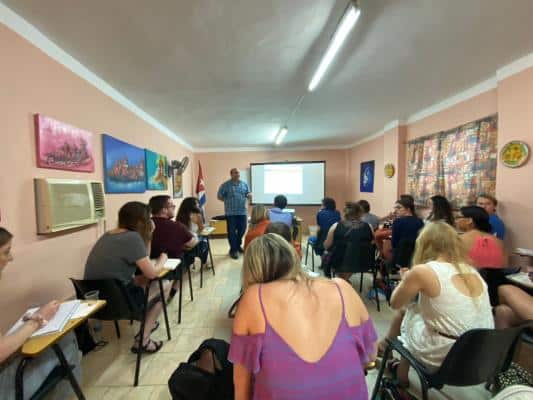
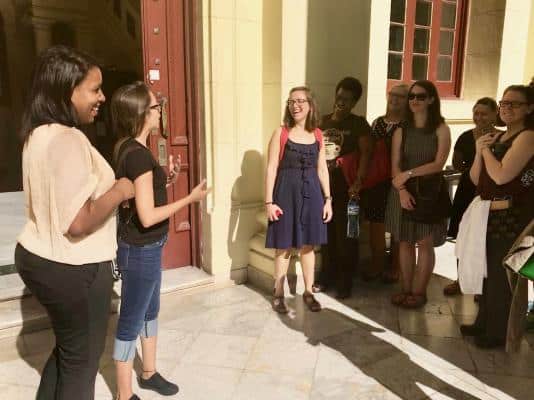
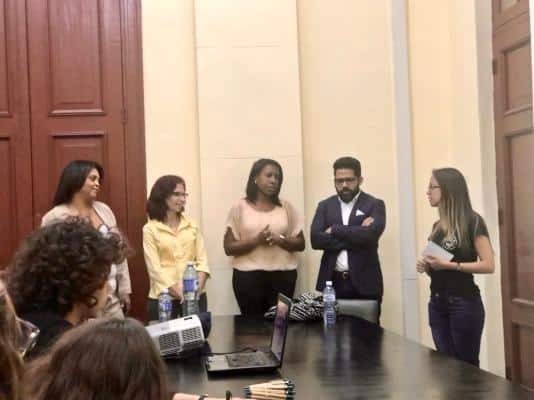
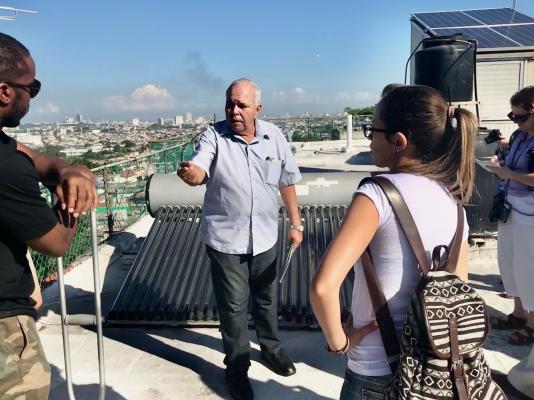
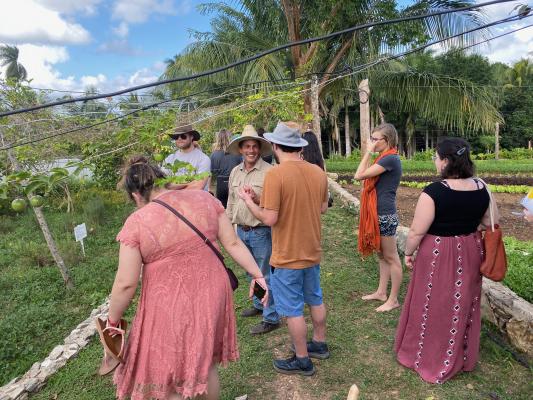
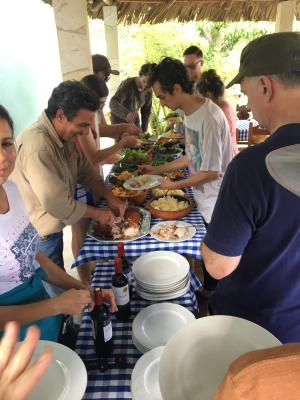
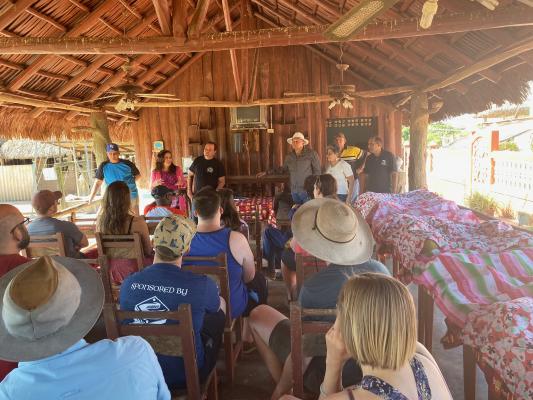
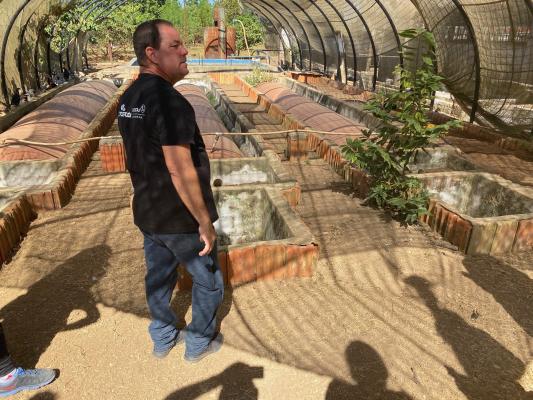
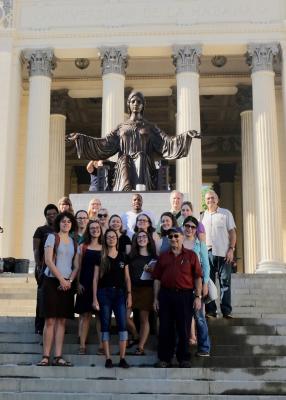

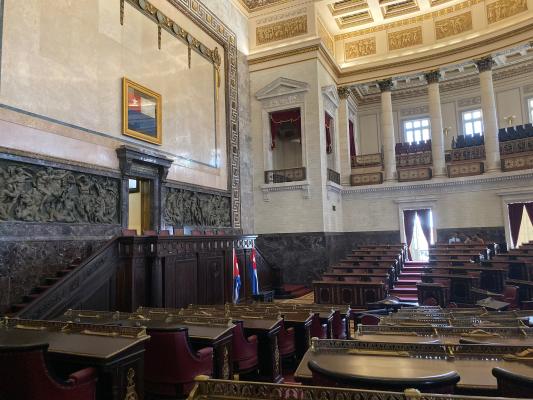
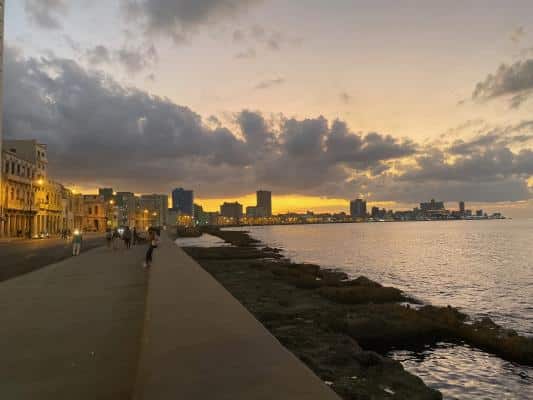

Current IEE Projects
Clean Transportation
The transportation sector is now the leading contributor to greenhouse gas emissions in the United States, emitting more carbon dioxide than even the power sector. The electrification of transportation—personal vehicles, mass transit, heavy-duty vehicles, and other forms—will play a major role in reducing emissions and combating climate change, as well as cleaning up harmful air pollution.
The Clean Transportation Team at the Institute for Energy and the Environment at Vermont Law School is working on accelerating the adoption of electric vehicles. As this transition is underway, policymakers at all levels of government are wrestling with critical questions and challenges: What can cities and towns do to help be prepared for the market shift to EVs? How can cities replace dirty diesel buses with zero-emission vehicles? How do we incentivize smart charging behavior that benefits the grid and all-electric customers? And most of all: How do we get more drivers to plug in? Our researchers are working to address a number of these questions.
Campus Sustainability Plan
Our campus sustainability plan project provides staff support to the VLS Campus Sustainability Committee. On November 26th, 2012 Vermont Law School’s President and Dean signed the American College & University Presidents’ Climate Commitment. As a signatory of this commitment, Vermont Law School is now taking the necessary steps to implement a comprehensive plan towards climate neutrality. To develop this plan, VLS has established a Campus Sustainability Committee and retained the Institute for Energy and the Environment to assist the committee in developing and implementing the Law School’s Campus Sustainability Plan. In addition to providing support to the committee an IEE faculty member and a student research associate are members of the committee, along with representatives from Buildings and Grounds, the Campus Greening Committee, and the Office for Institutional Advancement. The committee has developed procedures for the VLS Green Revolving Loan Fund and approved building efficiency, solar energy, and electric vehicle charging projects which are all at various stages of implementation.
Farm and Energy Initiative
In an effort to support the economic health and viability of farms while also promoting their transition to renewable energy, the Institute for Energy and the Environment teamed up with the Center for Agriculture and Food Systems (CAFS) at Vermont Law School to create the Farm and Energy Initiative (FEI). Directed by Assistant Professor and Staff Attorney Genevieve Byrne, the FEI researches energy strategies that improve efficiency, reduce energy consumption, and integrate the production of renewable energy like solar power into farming practices. In 2020 the FEI team launched a website (farmandenergyinitiative.org) that serves as an open-access resource for farmers, researchers, and policymakers to promote sustainable energy use in agriculture.
The site includes resources related to three FEI projects: the Farmland Solar Policy Project , which helps policymakers balance the need for renewable energy with farmland preservation; the Biogas and Organic Waste Management Project, which promotes the economically viable and sustainable use of anaerobic digestion in agriculture; and the Healthy Soils Law Project , which helps state governments develop state policies supporting environmental stewardship in agriculture. The project is directed by Staff Attorney and Assistant Professor Genevieve Byrne, and funded with a grant from the National Agricultural Library, U.S. Department of Agriculture.
Energy and The Cannabis Industry
Designing policy tools for regulation of energy use in the cannabis industry
As the state-law legalization of marijuana expands, the cannabis industry consumes an ever-growing percentage of electricity. This significant increase in electric consumption, when not paired with renewable sources of energy, leads to increased reliance on fossil fuels, puts pressure on grid infrastructure, and undermines the achievement of climate and energy goals. Localities where cannabis is legal are already experiencing negative impacts tied to energy use by marijuana production facilities. and are seeking both technical and policy solutions to mitigate the impact to the grid of cannabis industry expansion. This research project examines energy use in the cannabis industry with the goal of finding policy-based strategies for increasing energy efficiency and renewable energy use. The team will then create policy design tools to assist state and local lawmakers with regulating energy use in the cannabis industry.
Virtual Power Plants
How virtual power plants can advance electrification and mitigate infrastructure needs as we race to meet our climate challenges
This project and resultant paper will explore three contemporary case studies of how distributed energy resources have been aggregated into Virtual Power Plants (VPPs) to provide resilient, low carbon solutions for our climate challenge in a manner that can mitigate demands on our energy infrastructure. These recent case studies will analyze a variety of distributed energy resources, including home behind-the-meter batteries and electric vehicles, and how they can be aggregated to participate in wholesale electric markets to reduce the demand for larger utility-scale resources. The case studies will build on research previously performed at the Institute for Energy and the Environment and published in Volume 6 of the San Diego Journal of Climate Energy Law.
The research team will also apply the hands-on knowledge developed in the energy clinic to explore climate justice issues and how to best ensure that the benefits of the clean energy transition can be more equitably shared with low-income and underserved communities. The cases will consider how FERC orders 841 and 2222 will help remove the barriers to effective participation in regional markets and also explore the remaining conflicts with overlapping state and federal jurisdiction. We will also use these case studies to explore whether VPP resources allow states more effective opportunities to incent investments in clean and distributed resources without raising significant commerce clause concerns. The project will conclude with policy recommendations to promote the growth of VPPs in a manner that enhances electrification and promotes resilience as we transition to a low-carbon future.
Energy Efficiency and Electrification
Reducing the timeline for emissions reductions in the built environment via energy efficiency and electrification
The project will focus on identifying how the amount of total time needed for delivery of emissions reductions can be reduced. All stages of program and project development will be examined, including policy, design, and implementation. The hypothesis for the Project is twofold. First, that energy efficiency is still being done on the same timeline that it has always has, with no new emissions-focused examinations of where it can be reduced. Second, that in examining that timeline, the question of how to insert and embed electrification in energy efficiency efforts should be included. The thinking is that there are changes that can be made that would allow EE and Electrification efforts to be done “faster” which will lead to earlier emissions reductions than at present.
The project is funded by USDOE and the Lawrence Berkeley National Laboratory (LBNL). The methodology of the project will be based in part on literature research, but the main vehicle for investigation will be interviews with actors involved in the timeline, including policymakers (State and Federal) utilities, technology companies, EE practitioners, and others.
Securitization and Energy Justice
Economic and environmental pressures on coal generation are causing a slew of earlier than planned retirements. The facilities are retiring before their planned retirement dates and before the cost of constructing and upgrading the facilities has been fully recovered. Many states have passed securitization laws that will allow utilities to recover the costs of their investments while taking the polluting facilities offline. Ensuring recovery of costs is only one element of the process. Securitization must consider the interests of ratepayers, particularly low- and moderate-income ratepayers. Securitization also offers an opportunity to invest in the communities that have been harmed by decades of pollution. This research project will study recently passed securitization laws through an energy justice lens to assess whether the laws are protecting ratepayers and if the laws fully address the past damages and future harms of coal-fired generation.
Past IEE Projects
Advocating Net-Metering Standards
In a partnership with the Network for New Energy Choices, the Institute created a model net-metering statute for legislatures in states without such laws to use as a basis to develop their own law. The model statute was part of a larger report, “Freeing the Grid,” which ranked each state’s net-metering laws and interconnection standards. Currently, the institute is working on updating the report.
American Bar Association: Restructuring the Electricity Industry (Energy Efficiency Chapter)
The Institute is contributing a chapter to an upcoming American Bar Association book discussing options for restructuring the energy industry. The chapter examines the ways in which increased focus on energy efficiency programs can help utilities meet their rising energy demands in a cost-effective and environmentally friendly manner. The chapter draws on publications such as the American Council for an Energy-Efficient Economy’s State Energy Efficiency Scorecard to evaluate trends in efficiency investment and resulting changes in energy consumption. The chapter makes the case for energy efficiency as a critical part of a utility’s tool kit for managing rising energy demand.
Best Available Technology for Control of Vegetation on Transmission Lines
Unmonitored growth of vegetation surrounding transmission lines poses a major risk to the reliability of the bulk power system. Vegetation interference was a contributing cause to the 2003 Northeast power blackout and is therefore a focal point of the North American Electric Reliability Corporation (NERC) standards. IEE is monitoring the development of NERC vegetation management standards to evaluate their impact on interested parties and the utilization of new vegetation management technology.
Biomass Energy Policy
The IEE’s Biomass Energy Policy team has published two major reports recently. The most recent report, On-Farm Biodiesel Production in Vermont: Legal and Regulatory Overview, reviews all Vermont state and federal regulations related to on-farm biodiesel production. Commissioned by the Vermont Bioenergy Initiative at the Vermont Sustainable Jobs Fund, the report aims to inform farmers about the potential laws and regulations surrounding on-farm biodiesel production.
In another report, The Biomass Energy Policy Team evaluated the need for additional state and regional policies and standards to promote a sustainable market structure for woody biomass in Vermont. Considering literature and legislation from the United States, Canada, and Europe, the IEE team looked into the main concerns and obstacles to incentivizing the use of woody biomass. The following questions were addressed: What would a sustainable biomass market structure look like? How efficient are Vermont’s legal, regulatory, and monitoring tools for evaluating and responding to the cumulative impacts on forests that an increase in the woody biomass market would create? What improvements should be made to the legal, regulatory, and monitoring tools in Vermont to provide a sustainable market?
Climate Justice
Climate justice attempts to bring attention to the ethical and justice issues surrounding climate change. The impact goes far beyond environmental risk and degradation to people and so must our solutions. Climate justice issues exist on a global scale, a national scale, and a regional scale, with each level facing widely different challenges.
Here at the Institute for Energy and the Environment, we are currently looking at climate justice issues on a regional scale throughout New England. The IEE and the Energy Clinic seek to understand the regulatory, market, and policy dynamics of sustainable energy in New England. Building on this, we are developing models that benefit lower-income populations by tackling barriers so that those carrying the highest energy burden receive access to the same cost-saving measures of efficiency and renewables that benefit their wealthier neighbors.
Climate Legacy Initiative
In the Fall of 2007, Professors Burns Weston and Tracy Bach founded the Climate Legacy Initiative (CLI) at Vermont Law School. The CLI subsequently commissioned the IEE to produce a series of memos discussing the extent to which common law property and tort doctrines constrain the actions of current generations for the benefit of future generations. Future work includes a discussion of the extent to which philosopher John Locke anticipated limits on ownership.
Coal Information
Coal is known as the most abundant and dirtiest energy resource on the planet. The Institute for Energy and the Environment has an ongoing commitment to addressing the developing issues with this crucial resource, especially concerning investments in new coal-fired generating facilities. This past year, Director Michael Dworkin has delivered speeches across the country concerning cost-recovery for coal plants without carbon capture technology and has written the foreword to the Synapse Energy Economics Report, Don’t Get Burned: The Risks of Investing in New Coal-Fired Generating Facilities.
Community Energy Resources
In the Fall of 2014, the Institute for Energy and the Environment launched its new Energy Clinic, which introduces students to the practical aspects of real-world energy projects. The clinic provides services to community groups interested in promoting local ownership of clean energy resources. From the stage of project conceptualization to construction, students are responsible for drafting, reviewing, and explaining project-related agreements, manuals, statutes, regulations, local ordinances, and tax codes to assist in the development of community energy projects. The Energy Clinic represents a unique opportunity to participate in meaningful sustainable energy transactions. The Energy Clinic teams assist clients with community solar and micro-hydro development, planning for anaerobic biodigesters to generate energy from farm and food waste, low-income access to solar ownership, and energy efficiency assessment and implementation. More information on this project is available from the Energy Clinic.
Data Privacy
Data and energy, energy and data: In the 21st century, you cannot have one without the other. Advances in computing power and data collection are transforming the energy industry. Electric utilities collect and process billions of data points on how energy is consumed and generated. With the click of a mouse, energy data can be accessed and analyzed. And with increased collection and access, privacy concerns are on the rise.
Led by the Institute’s Mark James, the Data Privacy team is tackling some of the issues arising from increased access to energy data. From streamlining the flow of home energy efficiency ratings into Multiple Listing Services to enhancing the delivery of low-income energy efficiency programs, the team is working to understand and resolve privacy laws and regulations. By building systems that facilitate the movement of data while simultaneously protecting privacy rights, VLS is helping move the energy field into the 21st century.
Distributed Generation Photovoltaic
In partnership with the Electric Power Research Institute and the Solar Electric Power Association, the Institute is designing a model tariff for electric utilities to use in proposing their own tariffs to a state public service board. The report is designed to assist three groups of participants in the regulatory process: (1) utility technology personnel, (2) regulatory commissioners, and (3) the general public. It breaks down the most important issues concerning the regulatory context of utility-owned distributed generation photovoltaic systems and their implementation. Some of the questions we look at include whether and how a utility can garner a rate of return on its photovoltaic assets. Does photovoltaic generation offer specific social benefits? What are some of the business models a utility can use for widespread implementation? And, what would administrative documents such as a new tariff or expert testimony look like?
Energy and Land Use: Merging the Regulatory Streams (Windham Foundation Project)
In a joint project including Vermont Law School’s Land Use Institute, the team will work under a grant from the Windham Foundation to help address Vermont’s increasing energy needs and its future development in “Merging the Regulatory Streams.” As the energy needs of Vermont are expected to increase, while at the same time, Vermont utilities’ contracts with Vermont Yankee and Hydro-Quebec (the sources that supply two-thirds of the state’s electricity) are soon to expire. The extraordinary demand for new electricity generation could result in several adverse outcomes, two of which are particularly striking.
First, the demand could force the utilities to propose, and the Public Service Board to approve, projects that then seem badly needed for energy purposes, but which have financial or land-use impacts that could have been avoided by more portfolio-based consideration of alternatives. Second, the prospect of building any new facilities within Vermont could meet with such resistance that any new projects could become stuck in expensive and lengthy administrative proceedings, thus forcing unnecessary reliance upon external energy sources that might have higher financial or environmental costs. The goal of our current project is to avoid both situations by examining Vermont’s energy and land use regulations and implementations together, with a concentration on energy facility siting, in an effort to ensure that together, the two “regulatory streams” provide more efficient and effective planning.
Energy Security and Justice
The Energy Security and Justice Program investigates how to provide ethical access to energy services and minimize the injustice of current patterns of energy production and use. It explores how to equitably provide available, affordable, reliable, efficient, environmentally benign, proactively governed, and socially acceptable energy services to households and consumers. One track of the program focuses on the lack of access to electricity and reliance on traditional biomass fuels for cooking in the developing world. Another track analyzes the moral implications of existing energy policies and proposals, with an emphasis on the production and distribution of negative energy externalities and the impacts of energy use on the environment and social welfare. Recently, the team co-authored the introductory chapter titled Energy, Poverty, and Development: A Global Review for a multi-volume book.
First Annual Symposium on Disaster Studies
The team also presented Freeing the Grid at the First Annual Symposium on Disaster Studies, hosted by The Roosevelt Institution at Tulane University, April 20 – 22, 2007.
Geological Carbon Sequestration Project
The Institute for Energy and the Environment is working on a collaborative project with the Carnegie Mellon Department of Engineering and Public Policy, the University of Minnesota, and the law firm of Van Ness Feldman, to develop a comprehensive framework for how best to implement an appropriate regulatory environment in the U.S. for the commercialization of carbon capture and sequestration. The goal of this framework is to facilitate the rapid development and adoption of a science-based regulatory regime for the deep geological sequestration of carbon dioxide that is safe, environmentally sound, affordable, internationally compatible, and socially equitable. Specifically, the Institute’s research team is examining the question of how to manage liability risk through the life cycle of a geologic sequestration project. Our approach involves the analysis of the benefits and drawbacks of various liability mechanisms along a spectrum of liability. Based on our work we will make final recommendations for approaching liability issues during the life cycle of a sequestration project and draft recommended statutory language for achieving the project’s goal. This collaborative effort is funded by a grant from the Doris Duke Charitable Foundation.
Global Energy Justice: Energy Ethics in a Carbon-Constrained World
Michael Dworkin has been working with a number of international energy scholars drafting a book exploring the implications of energy justice in a carbon-constrained world. While energy consumption is crucial for meeting the basic needs necessary for human development, increased energy production must be balanced against the financial costs, security risks, health concerns, and environmental harms that it presents. This book explores this tension and attempts to strike a balance between the economic, environmental, and security dimensions of energy policy while managing the costs associated with them. Publication is expected in the winter of 2009.
Greening China
The Institute is part of a U.S. Agency for International Development Grant to promote environmental and energy conservation standards in China by educating Chinese lawyers, law students, judges, and government officials on environmental law and its administration. The institute has sent multiple staff members to China to discuss energy issues with Chinese professionals. Some of the topics that the institute has specifically worked on include the use of energy conservation contracts in China, the impact of the Clean Development Mechanism on Chinese renewable energy sources, and energy efficiency in the Chinese electric power grid.
Model Net Metering Statute and Interconnection Standard
The team drafted a model net metering statute and interconnection standards for incorporation in Freeing the Grid: How Effective State Net Metering Laws Can Revolutionize U.S. Energy Policy, published by the Network for New Energy Choices, NO. 01-06, in November 2006. Net metering is the process by which utility customers can generate their own electricity from a renewable source and sell the excess energy back to the utility. The model statute and standards were provided to show legislators how to create such a statute and effectively implement net metering in their state. Although some states, such as New Jersey, have a great track record for incorporating net metering into their energy strategy, a lot of states have not tried to utilize net metering to its greatest potential. The model statute recommends allowing all utility customers to participate in net metering and promotes using a wide variety of renewable technologies to encourage increased participation.
Modeling Transportation Incentives
The IEE is assisting the University of Vermont in modeling transportation consumer decision-making as it varies with real-world changes, regulations, and incentive programs. The model is intended to determine what factors influence the consumer shift to hybrids and plug-in hybrids and further, to determine the best and most effective ways to reduce the use of fossil fuels. Among other factors, the modeling will take into account the requirements of the Regional Greenhouse Gas Initiative, the changing prospects of carbon capping, the realities of electricity supply and the grid, and fluctuations in fossil fuel prices.
National Ethanol Policy
This project is a partnership with the Network for New Energy Choices in evaluating the net social benefits and costs of widespread ethanol production in the U.S. Our work produced the report: “The Rush to Biofuels,” which is critical of corn-based ethanol production. Currently, we are also looking at the sources for funding for ethanol projects. The ultimate goal of our research is to educate the public on the costs of industrially-produced ethanol to society as compared to other forms of renewable energy.
Renewable Energy Integration, Decarbonization, and Power-to-Gas
The aim of this project is to examine the legal and policy issues as well as the potential for deploying emerging technologies such as power-to-gas as a means of efficiently integrating renewables and low-carbon energy sources in the evolving energy supply industry. Over the course of the past century, the conventional and systemic approach to accessing and delivering energy has been to (i) generate electric energy from primary sources such as water running through an hydro-dam, coal, natural gas and nuclear; (ii) transmitting the energy through high voltage wires, substations, transformers and other network facilities; (iii) distribution via local networks to various classes of consumers e.g. commercial, industrial, and residential.
The industry evolved from a few vertically integrated energy utilities towards more or less open and competitive markets governed based on contracts, rules, integrated resource plans, policy guidelines, etc. mostly with the aim of ensuring reliability, affordability, just and reasonable returns to investors as well as security of supply. However, growing concerns about sustainability and environmental impacts, as well as the drive to reduce energy-related carbon emissions, promote zero and low-carbon sources, and changing consumer preferences among other things have led to the growth in renewables such as solar and wind energy over the past decade. The trend has also led to a less centralized and more distributed energy market design. The falling costs of renewables such as wind and solar are also key in the unfolding energy market transitions. This project is led by Dr. Tade Oyewunmi.
Resource Extraction
The resource extraction team studies ways to improve how regulatory regimes for the extraction of natural resources (predominantly oil and gas, and predominantly in the Arctic) can reduce impacts to the environment. Past work has drawn on post-Deepwater Horizon regulatory reviews around the Arctic and recommended potential areas of harmonization between U.S. and Canadian regulatory systems. The team contributed to the oil and gas chapter of Arctic Ocean Review Final Report produced by the Protection of the Arctic Marine Environment (PAME) working group and adopted by the Arctic Council ministers at their 2013 summit in Kiruna. Current projects include recommending ways to improve regulator and public access to environmental studies and information relevant to the leasing and licensing of offshore oil and gas activity in the U.S. Arctic.
Rush to Ethanol: Not All Biofuels are Created Equal Equal Contribution
The team contributed to the chapter on “Ethanol Business: Dollars and Politics on the Farm” in Rush to Ethanol: Not All Biofuels Are Created Equal, Food and Water Watch and Network for New Energy Choices, July 2007. The focus of this chapter was to highlight the interaction between the government, corn subsidies, and the ethanol industry. This connection illustrates how ethanol is not the best option for a renewable fuel alternative to gasoline.
Smart Grid
Electricity has a bright future as both a clean and efficient source of energy and critical to that future is the transformation to a smart electric grid. At the center of the evolution of the smart electric grid is the introduction of new technology at the customer meter, as well as the distribution and transmission system level. This technological innovation has required that the road map to a smart electric grid become a partnership of electric utilities, technology companies and as we electrify our transportation system even the auto companies. Unsurprisingly, the introduction of this new technology, has presented legal, policy and regulatory challenges for state and federal policymakers and regulators.
In 2010, the IEE initiated its Smart Grid Project, with an initial $450,000 in grant funding from the U.S. Department of Energy with assitance from Vermont Congressman Peter Welch. The Smart Grid Project has produced multiple case studies of U.S. smart grid implementation, a model utility customer data privacy policy and published a new book “A Smarter, Greener Grid.” The Smart Grid team in 2015 completed a book chapter on The Utility of the Future. In 2017 the Smart Grid team authored its second book on the Electric Battery as a Key to the Low Carbon Future. This industry innovation has led to dynamic new career opportunities for both Masters and JD students who have embraced this transformation. Vermont Law School’s leading clean energy curriculum and the IEE’s Smart Grid project provide unmatched opportunities to gain knowledge and experience in this exciting field.
Sunshot Plug-and-Play for American Homes
With a grant for the Department of Energy’s SunShot Initiative, the IEE SunShot Plug-and-Play team, in collaboration with Fraunhofer U.S.A.’s Center for Sustainable Energy and 12 other partners, is working to develop a cost-effective market-ready plug-and-play residential rooftop solar system. While the average installed price of solar has more than halved since 2010 to $3/watt (W), the Department of Energy’s SunShot Initiative aims to halve that cost again, targeting $1.50/W installed cost for residential PV systems to make solar energy a truly viable option for the average American home. The SunShot Plug-and-Play project aims to make the $1.50/W target a reality within three years.
Because it is designed to be easier and safer to install, much like plugging in an appliance, and will automatically connect to the local utility through smart microelectronic devices, the plug-and-play system is expected to dramatically reduce the installation, inspection, and permitting costs for small residential PV. The IEE SunShot Plug-and-Play team has conducted comprehensive research into the codes and standards (structural, electrical, and procedural) governing residential rooftop solar installations in the United States. It has identified various regulatory barriers to the Plug-and-Play concept and continues to identify both technical and regulatory solutions to those barriers. The team will also help to develop a voluntary industry standard and advise the wider team on regulatory and policy concerns arising throughout the project.
The Farmer’s Guide to Energy Self-Reliance
The Farmer’s Guide explains how independent farmers can incorporate energy-efficient technology into their farming practices. Once the farm is more energy efficient, renewable energy sources can be integrated as well to further reduce the farmers’ dependence on fossil fuels. This allows farmers to continue their role as stewards of the land by showing them the resources currently available to help improve the environment while simultaneously improving their bottom line. The handbook is a 54-page guide on how to use energy efficiency, biomass and renewable energy on America’s farms to decrease energy costs. It is part of a national effort by the Institute to educate the agricultural community on the business and conservation potentials available through energy self-reliance. The website is designed to help farmers save money and reduce environmental externalities from their farms. The website is focused on helping family farms and what we call “independent farms,” or small to medium-sized farms that are not vertically integrated into a corporate structure.
Work with Vermont State Treasurer, Jeb Spaulding
Committed to protecting Vermont’s financial future, Treasurer Spaulding recognizes that his state’s economy is inexorably linked to events occurring on the national and international scene. Treasurer Spaulding is a founding member of the Investor Network on Climate Risk, an alliance of U.S. and European investors focused on addressing the risks and opportunities posed by climate change. Joining with other state treasurers nationwide, Treasurer Spaulding recently urged the SEC to require publicly traded companies to assess and disclose the impacts from climate change. Such disclosure aims to encourage companies to take mitigating steps now that protect both the individual investor and businesses from future problems related to this issue.
Treasurer Spaulding has also joined leading investors and other state treasurers in urging the U.S. Congress to pass a national energy bill that includes strong measures for expanding clean energy, reducing oil dependence, and curbing global warming pollution. Each year, Treasurer Spaulding relies on the assistance of one research associate from the Vermont Law School’s Institute for Energy and the Environment. The associate works closely with the treasurer by researching opportunities for filing and co-filing resolutions related to Vermont’s pension funds that would encourage the improvement of various environmental policies, practices, and disclosures. Past researchers have presented resolutions at annual shareholder meetings. Additional work includes representing Treasurer Spaulding as a member of the Investor Network on Climate Risk, the Global Warming Shareholder Campaign, and various other investment initiatives associated with climate change and environmental liabilities. This past year, the research associate was able to play a key role in assisting Treasurer Spaulding on the issues related above and acted as his representative at the U.N. Investor Summit.
IEE Publications
The Institute for Energy and the Environment at VLGS generates a number of publications related to its research endeavors.
OFFSHORE WIND REPORT: USING NON-PRICE CRITERIA IN STATE OFFSHORE WIND SOLICITATIONS TO ADVANCE NET POSITIVE BIODIVERSITY GOALS
This report, commissioned by The Nature Conservancy, examines how states can use offshore wind solicitations to enhance biodiversity and ecological function in marine and aquatic ecosystems. The report evaluates the current legal and regulatory structure of state offshore wind solicitations and draws on examples from Europe to show a path forward for maximizing the environmental benefits of offshore wind. The report was co-authored by Professor Mark James, Kira Jannusch, Kelsey Koenig, Jack McGowan, Jon Small, and Ervin Yahr III.
BUYER’S GUIDE TO DRIVING ELECTRIC IN VERMONT’S UPPER VALLEY
Electric vehicles are fun, fast, and affordable. Cut costs on buying or leasing and EV by up to $14,000 through state and federal incentives.
BUILDING A 21ST CENTURY ELECTRICITY SYSTEM
Building a least-cost, low-carbon electricity system with efficiency, wind, solar, and intelligent grid management.
THE CONTINUING, CATASTROPHIC FAILURE OF U.S. PANDEMIC POLICY TO PROTECT PUBLIC HEALTH AND THE ECONOMY
A follow-up to his previous article, The Political Economy of Pandemic Policy, by Dr. Mark Cooper. His most recent article is an update of his earlier analysis, which covered the first 6-months of the Trump administration’s COVID policy response.
THE POLITICAL ECONOMY OF PANDEMIC POLICY
By Senior Fellow for Economic Analysis at the Institute for Energy and the Environment, Mark Cooper, this paper explores why market fundamentalism and the Trump Administration failed to protect public health and the economy during the COVID-19 pandemic.
CARBON PRICING IN US ELECTRICITY MARKETS: EXPEDITING THE LOW-CARBON TRANSITION WHILE MITIGATING THE GROWING CONFLICT BETWEEN RENEWABLE GOALS AND REGIONAL ELECTRICITY MARKETS
This paper published in the international legal journal, Climate Law, explores the growing conflict between state renewable energy goals and regional electricity markets in the United States and examines the benefits of implementing carbon pricing in electricity markets to cost-effectively expedite the low carbon transition. The article was coauthored by IEE Director, Dr. Kevin Jones and former IEE research associates Ben Civiletti and Angela Sicker in Climate Law, Brill, December 2019.
IMPROVING THE CYBERSECURITY OF THE ELECTRIC DISTRIBUTION GRID – PHASE 2 REPORT
The Phase 2 Report, commissioned by Protect our Power, defines potential solutions to overcoming the barriers detailed in the Phase 1 Report and identifies specific ways that utilities, regulators, state legislators, governors, and federal agencies can work together to implement practical solutions to overcome critical grid concerns.
IMPROVING THE CYBERSECURITY OF THE ELECTRIC DISTRIBUTION GRID – PHASE 1 REPORT
The Phase 1 Report was commissioned by Protect our Power , a non-profit organization focused on grid security. The report identifies barriers to addressing the growing risk and presents best practices to assist state electricity utility commissions and their regulated utilities to increase investment in enhanced security.
AVOIDING NUCLEAR AND FOSSIL FUEL POTHOLES, A GREEN NEW DEAL HAS A CLEAR PATH TO A CLEAN, LOW COST, LOW CARBON, PROGRESSIVE, CAPITALIST ELECTRICITY SECTOR
This paper by Dr. Mark Cooper, Senior Fellow for Economic Analysis, uses a rigorous cost-benefit approach to analyze the aspirations of the Green New Deal in the electricity sector and assess the role of central station facilities, particularly nuclear power, in meeting those goals.
POWERING ENERGY EFFICIENCY AND IMPACTS: A DATA-DRIVEN PROJECT SUPPORTING LOW-INCOME HOUSEHOLDS IN NORTHEASTERN NORTH CAROLINA
A coalition of researchers including the North Carolina Clean Energy Technology Center and Vermont Law School’s Institute for Energy and the Environment researched ways to combine publicly available mapping data with confidential information from utilities and government agencies to better identify households in need of energy efficiency services. The goal was to help overcome the dual challenge that low-income households face when paying energy bills. Older homes tend to be less efficient, and energy costs eat up a greater percentage of the household’s income.
LOW-INCOME SOLAR OWNERSHIP IN VERMONT: OVERCOMING BARRIERS TO EQUITABLE ACCESS
This April 2018 report prepared for the Vermont Low Income Trust for Electricity (VLITE), Inc. examines how to give low-income customers equitable access to the benefits of solar as the renewable energy resource becomes an increasingly cost-effective option to meet clean energy goals.
A PJM CARBON PRICING APPROACH TO BRIDGE THE STATE-FEDERAL ENERGY POLICY DIVIDE
This Utility Dive Commentary by Professor Kevin B. Jones argues that a carbon charge in PJM could be designed to eliminate the need for out-of-market ZEC payments to nuclear generation and significantly reduce state payments for renewable energy credits while speeding the clean energy transition.
HOW THE RTO STAKEHOLDER PROCESS AFFECTS MARKET EFFICIENCY
This white paper, written by Professor Kevin B. Jones, Senior Research Fellow Mark James, and IEE students Ashleigh H. Krick (JD/MERL’17) and Rikaela R. Greane (JD’17), analyzes the role that the regional transmission organization (RTO) and independent system operator (ISO) stakeholder-governance process plays in ensuring the competitiveness and efficiency of a wholesale electric market.
THE ELECTRIC BATTERY: CHARGING FORWARD TO A LOW-CARBON FUTURE
This new book from Praeger publishing (April 2017) was authored by Professor Kevin B. Jones, Climate and Energy Media Fellow Benjamin B. Jervey, and Matthew Roche (JD’16) and Sara Barnowski (JD’17) all members of the IEE Smart Grid Project. According to the publisher, “The book provides an unprecedented and easy-to-understand explanation of both the policy issues and technological challenges facing the battery in the quest to significantly reduce humanity’s collective “carbon footprint” on the earth.” You can learn more at ABC-CLIO or at Amazon.com.
CAPTURING THE SUN: A ROADMAP FOR NAVIGATING DATA-ACCESS CHALLENGES AND AUTO-POPULATING SOLAR HOME SALES LISTINGS
More than 1.1 million homes in the United States have solar panels. Real estate multiple listing services (MLS) do not have a standardized method of reporting solar features which affects both sellers and buyers. Auto-populating solar data into MLS will allow sellers to capitalize on the value of their home and it will give more information to buyers seeking to purchase a solar home. Accessing the solar data is the key to auto-populating MLS and unlocking the value of solar.
Capturing the Sun provides a roadmap for unlocking the value of solar data. The Roadmap guides solar and real estate professionals through key challenges and provides the best path forward to get solar data into MLS. The Institute, working as a subcontractor to a Lawrence Berkeley National Laboratory (LBNL) DOE grant, identified key legal hurdles limiting access to solar data. The Institute developed consent mechanisms to unlock existing solar data and crafted contract clauses to facilitate the transfer of future solar data.
Team Leaders: Mark James; Roxana-Andreea Mastor
Research Associates: Edward Schultz; Jack Wadleigh; Sherri White-Williamson
Read More
SECURING OUR ENERGY FUTURE: THREE INTERNATIONAL PERSPECTIVES ON MICROGRIDS AND DISTRIBUTED RENEWABLES AS A PATH TOWARD RESILIENT COMMUNITIES
This paper examines three diverse microgrid cases in the US, Canada, and the European Union. It explores how microgrids can help build resilient communities, facilitate distributed renewable energy, and ultimately lead to a secure energy future. The cases include both urban and remote settings and compare the social, legal, and policy lessons learned from these cases to advance microgrid policy for long-term community resilience. The Co-Authors are Kevin B. Jones, Mark James, and Roxana-Andreea Mastor of the IEE and the article is to be published in a special sustainability edition of the Journal of Environmental Hazards.
BEYOND COMMUNITY SOLAR: AGGREGATING LOCAL DISTRIBUTED RESOURCES FOR RESILIENCE AND SUSTAINABILITY
In Chapter 4 in Innovation and Disruption at the Grid’s Edge, a book from Academic Press that examines the viable developments in peer-to-peer transactions enabled by open platforms on the grid’s edge the IEE Smart Grid Team addresses the important issues of community sustainability and resilience. With consumers and prosumers using more electronic platforms to trade surplus electricity from rooftop solar panels, share a storage battery, or use smart gadgets that manage load and self-generation, the grid’s edge is becoming crowded. In this chapter, the IEE’s Smart Grid Team of Professor Kevin Jones, Flora Wenhui Ji, Erin Bennett, and Borna Kazerooni examine how communities can go beyond the benefits of community solar and how community energy leaders in California, New York, and Massachusetts are employing community choice aggregation to reduce their communities’ carbon footprints and to improve energy resilience.
THE DISTRIBUTED UTILITY: CONFLICTS AND OPPORTUNITIES
The IEE Smart Grid Team contributed this chapter on leading efforts to reform utility regulation to enhance the competitive role of distributed energy resources in New York, California, Hawaii, and Massachusetts for the new book “THE FUTURE OF UTILITIES – UTILITIES OF THE FUTURE: HOW TECHNOLOGICAL INNOVATIONS IN DISTRIBUTED GENERATION WILL RESHAPE THE ELECTRICAL POWER SECTOR,” Co-Authors were Professor Kevin B. Jones., Taylor Curtis (JD/MELP), Matthew Roche (JD), Daniel Sauer (MELP), and Marc de Konkly Thege (MERL). The book was published by Academic Press, April 2016.
THE ECONOMIC AND INSTITUTIONAL FOUNDATIONS OF THE PARIS AGREEMENT ON CLIMATE CHANGE: THE POLITICAL ECONOMY OF ROADMAPS TO A SUSTAINABLE ELECTRICITY FUTURE
A January 2016 analysis by Mark Cooper, senior fellow for economic analysis at the Institute for Energy and the Environment at Vermont Law School.
WOODY BIOMASS: THE PATH TOWARD A SUSTAINABLE USE OF VERMONT’S FORESTS
This August 2015 report points to sustainable paths regarding the potential increase in the use of woody biomass for electricity, and suggests policies to be adopted by Vermont to ensure long-term forest health and productivity.
POWER SHIFT: THE DEPLOYMENT OF A 21ST CENTURY ELECTRICITY SECTOR AND THE NUCLEAR WAR TO STOP IT
A June 2015 report by Mark Cooper, senior fellow for economic analysis at the Institute for Energy and the Environment at Vermont Law School.
ELECTRIC VEHICLE CHARGING: TARIFFS AND TRADEOFFS
Mindy Blank and Kevin B. Jones, Ph.D., Public Utilities Fortnightly, March 15, 2015. The authors examine various types of charging strategies and infrastructure available today and report on the experience from four utility case studies.
THE URBAN MICROGRID: SMART LEGAL AND REGULATORY POLICIES TO SUPPORT ELECTRIC GRID RESILIENCY AND CLIMATE MITIGATION
Kevin B. Jones, Ph.D., Sylvia J.S. Bartell, Daniel Nugent, Jonathan Hart, and Achyut Shresthat, Fordham Urban Law Journal, October 2014 (Vol. XLI, No. 5) from the Symposium “Smart Law for Smart Cities: Regulation, Technology, and the Future of Cities.” According to the Symposium Book’s Introduction, in this article, IEE faculty, JD, and MERL student researchers “understand the importance of highlighting successful projects and innovations, grounding the dialogue in real models of confronting and overcoming legal challenges. Indeed, understanding how technically complex infrastructure works proves incredibly useful in tandem with recommendations for legal change.” The authors “show that clean energy use in cities not only is theoretically possible but also is happening right now.”
GLOBAL ENERGY JUSTICE: PROBLEMS, PRINCIPLES, AND PRACTICES
Benjamin K. Sovacool and Michael H. Dworkin, Cambridge University Press, 2014.
A SMARTER, GREENER GRID: FORGING ENVIRONMENTAL PROGRESS THROUGH SMART ENERGY POLICIES AND TECHNOLOGIES
Kevin B. Jones and David Zoppo (’13), Praeger, May 2014
Twenty-one students from the IEE’s Smart Grid Project contributed to this important book which according to former FERC Chairman Jon Wellinghoff, “describes and examines policies and technologies that will enable distributed resources – including efficiency, demand response, distributed generation, and electric vehicles – to transform our energy future. This book offers a realistic path to that future and real progress toward mitigating the impacts of climate change.”
THE FUTURE OF ELECTRIC POWER TRANSMISSION
Owen McClain, Shannon Clarke, Graham Jesmer, Jim Cunningham, and Kevin B. Jones in Energy Choices: How to Power the Future, Edited by Robin Morris Collin, Praeger, October 2014.
SMALL MODULAR REACTORS AND THE FUTURE OF NUCLEAR POWER IN THE UNITED STATES
Energy Research & Social Science, Volume 3, September 2014, Pages 161–177
INDUSTRY RESPONSE TO REVENUE EROSION FROM SOLAR PV’S
Jonathan Blansfield (’14) and Kevin B. Jones in Distributed Generation and its Implications for the Utility Industry, Edited by Fereidoon P. Sioshansi, Academic Press, 2014.
In a chapter of this book, two members of the Smart Grid Project present three case studies from California, Arizona, and Vermont, examining the relationship of increased distributed energy resource adoption and the evolving electric utility
MULTI-CRITERIA PORTFOLIO ANALYSIS OF ELECTRICITY RESOURCES: AN EMPIRICAL FRAMEWORK FOR VALUING RESOURCE IN AN INCREASINGLY COMPLEX DECISION MAKING ENVIRONMENT, BACKGROUND MATERIALS
Expert Workshop: System Approach to Assessing the Value of Wind Energy to Society European Commission Joint Research Centre, Institute for Energy and Transport, Petten, The Netherlands, November 13-14, 2013
A REGULATOR’S PRIVACY GUIDE TO THIRD-PARTY DATA ACCESS FOR ENERGY EFFICIENCY
The IEE collaborated on this guide with Lawrence Berkeley National Laboratory and published in December of 2012. Often, regulatory commissions confront and must resolve two competing policy imperatives: (1) the need to facilitate access to customer data for energy efficiency purposes while (2) safeguarding customer privacy and providing consumer protections in connection with unwanted uses of data. This report informs state regulators about issues and policy options related to providing access to customer information held by utilities that can be used to support and enhance the provision of energy efficiency services and protect customer privacy.
A FARMER’S GUIDE TO ENERGY EFFICIENCY AND RENEWABLE ENERGY
The Agriculture Energy Outreach Team recently published A Farmer’s Guide to Energy Efficiency and Renewable Energy. The purpose of this Guide is to introduce energy efficiency and renewable energy generation as ways for farmers to reduce their vulnerability to the volatile variable of on‐farm energy costs. This guide provides an overview of on-farm energy projects that can help reduce a farmer’s overall energy use without compromising yield. Importantly, this guide also highlights key federal incentives available to support the pursuit of these renewable energy and energy efficiency projects, explaining who is eligible and how to apply for funding. In addition to federal resources, this guide provides useful resources and contact information to help locate technical and financial assistance in each state.
FINANCING RESIDENTIAL ENERGY EFFICIENCY IN VERMONT
We began this research based on the assumption lack of financing stops most homeowners from improving the energy efficiency of their homes. However, after only a few interviews with Vermont lenders, the primary issue emerged: lack of demand. Without a strong reason to demand more energy efficiency, few homeowners will work through the bewilderingly complex process that leads to an outcome with unknown benefits. Vermont needs a simple, start-to-end process that includes easily accessible financing and policies that make the value of energy efficiency improvements visible to homeowners and to the market.
ETHANOL SUBSIDIES
Long heralded as a green alternative to fossil fuel, corn-based ethanol has become a costly distraction that chiefly benefits corporate, political, and lobbying interests rather than the American public, the environment, small farmers, and rural communities, according to a new report by Vermont Law School’s Institute for Energy and the Environment and Food & Water Watch, a Washington, D.C.-based nonprofit. The report “Crystal Eth: America’s Crippling Addiction to Taxpayer-financed Ethanol,” finds that the Ethanol industry has received over $22 billion in government support from 1999 to 2008 and that the funds largely benefited large agribusiness companies rather than supporting smaller farmers.
Read More
IMPLEMENTING THE ARCTIC OFFSHORE OIL AND GAS GUIDELINES
The Institute for Energy and the Environment is pleased to announce a fifth White Paper in its series on Arctic Offshore hydrocarbon development. The series examines how Arctic Ocean coastal states’ regulations reflect guidelines produced by the Arctic Council/PAME for offshore oil and gas activity. The IEE prepared papers on Canada and the United States in Fall 2010. In February 2011, the IEE presented the Greenland and Russian Federation White Paper to the Inuit Circumpolar Council, which commissioned the study.
White Papers
United States and Canada
- Introduction Letter and Permitting Overview for the United States and Canada
- White Paper No. 1: Operating Practices in the United States and Canada
- White Paper No. 2: Environmental Monitoring in the United States and Canada
- White Paper No.3: Northern Communities—Participation in Decision Making in the United States and Canada
- White Paper No. 4: Decommissioning and Site Clearance in the United States and Canada
Greenland and Russia
- White Paper No. 5: Implementing the Arctic Offshore Oil and Gas Guidelines in Greenland and the Russian Federation
- Overview of the Permitting Processes in Greenland and Russia
- Environmental Assessment in Greenland and Russia
- Indigenous Participation Greenland and Russia
- Operating Practices in Greenland and Russia
Other Publications
Zhen Zhang and Matthew Stern, NERC Today and Tomorrow, Public Utilities Fortnightly, March 2010
John A. Sautter and Christina Switzer, A Change in Climate? How State Regulators Are Making Decisions in Response to Global Warming, Elec. J. (forthcoming 2008).
Michael Dworkin & Rachel Goldwasser, Government Accountability and Independent System Operators, 28 Energy L.J. 453 (2007).
John A. Sautter, Laura Furrey & R. Lee Gresham, Construction of a Fool’s Paradise: Ethanol Subsidies in America, 7 Sustainable Dev. L. & Pol’y 26 (2007).
John A. Sautter, Where Have All the Benefits Gone: Cost Allocation Toward Residential Ratepayers in Restructured Electricity Markets, 20 Elec. J. 36 (2007).
Michael Dworkin, et al., Revisiting the Environmental Duties of Public Utility Commissions, 7 Vt. J. Envtl. L. 1 (2006).
Michael Dworkin, Shanna Vale & Ellen Crivella, The (im)Prudence of Coal Investment, 314 Sci. 1791 (2006).
Keith Dennis, The Compatibility of Economic Theory and Proactive Energy Efficiency Policy, 19 Elec. J. 58 (2006).
International Energy Activities
The global energy system is complex and undergoing constant change, complicating the transition to a lower carbon future. Vermont Law School’s Institute for Energy and the Environment engages with our partners such as our U.S. Asia Partnership for Environmental Law, our international fellows in Europe and Latin America, and international faculty and students in locations such as Havana, Cuba in order to broaden the reach of our educational program and to learn from other region’s experiences in the low carbon transition. The Institute for Energy and the Environment welcomes students and scholars from across the globe and embraces the opportunity to build new international collaborations that help expedite our transition to a clean energy future.
See the announcement and call for papers for the Just Transition to a Low Carbon Future 2020 Conference cosponsored by the IEE.
Our summer session course, Global Energy Law and Policy, alternates between a focus on European Energy and Climate Law and Latin American Energy and Climate Law. In the summer of 2019 Dr. Anna Marhold taught the course from an EU perspective. Dr. Marhold is an Assistant Professor at the Institute of Public Law and the Grotius Centre for International Legal Studies at Leiden University where her specialization is international economic law, with a particular focus on international trade law at the intersection of energy and environmental regulation.
In addition, our curriculum offers multiple opportunities to explore environmental issues across Asia, including leading research opportunities through our U.S. Asia Partnership for Environmental Law.
Institute for Energy and the Environment News and Events
No News & Updates
Contact Us
Institute for Energy and the Environment
at Vermont Law and Graduate School
164 Chelsea St.
P.O. Box 96
South Royalton, VT 05068
IEE at VLGS: 802-831-1151
[email protected]



